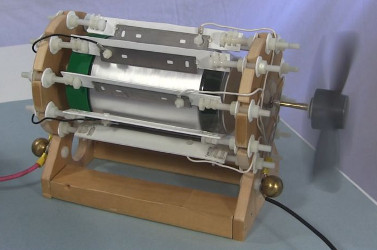
Oculus, as we know, was acquired by Facebook for $2 billion, and now the VR community has been buzzing about trying to figure out what to do with all this newly accessible technology. And adding to the interest, the 2nd iteration of the development kits were released, causing a resurgence in virtual reality development as computer generated experiences started pouring out from of every corner of the world. But not everyone can afford the $350 USD price tag to purchase one of these devices, bringing out the need for Do-It-Yourself projects like these 3D printed wearable video goggles via Adafruit.
The design of this project is reminiscent of the VR2GO mobile viewer that came out of the MxR Lab (aka the research environment that spun out Palmer Lucky before he created Oculus). However, the hardware here is more robust and utilizes a 5.6″ display and 50mm aspheric lenses instead of a regular smart phone. The HD monitor is held within a 3D printed enclosure along with an Arduino Micro and 9-DOF motion sensor. The outer hood of the case is composed of a combination of PLA and Ninjaflex printing-filament, keeping the fame rigid while the area around the eyes remain flexible and comfortable. The faceplate is secured with a mounting bracket and a pair of aspheric lenses inside split the screen for stereoscopic video. Head straps were added allowing for the device to fit snugly on one’s face.
At the end of the tutorial, the instructions state that once everything is assembled, all that is required afterwards is to plug in a 9V power adapter and an HDMI cable sourcing video from somewhere else. This should get the console up and running; but it would be interesting to see if this design in the future can eliminate the wires and make this into a portable unit. Regardless of which, this project does a fantastic job at showing what it takes to create a homemade virtual reality device. And as you can see from the product list after the break, the price of the project fits under the $350 DK2 amount, helping to save some money while still providing a fun and educational experience.


















